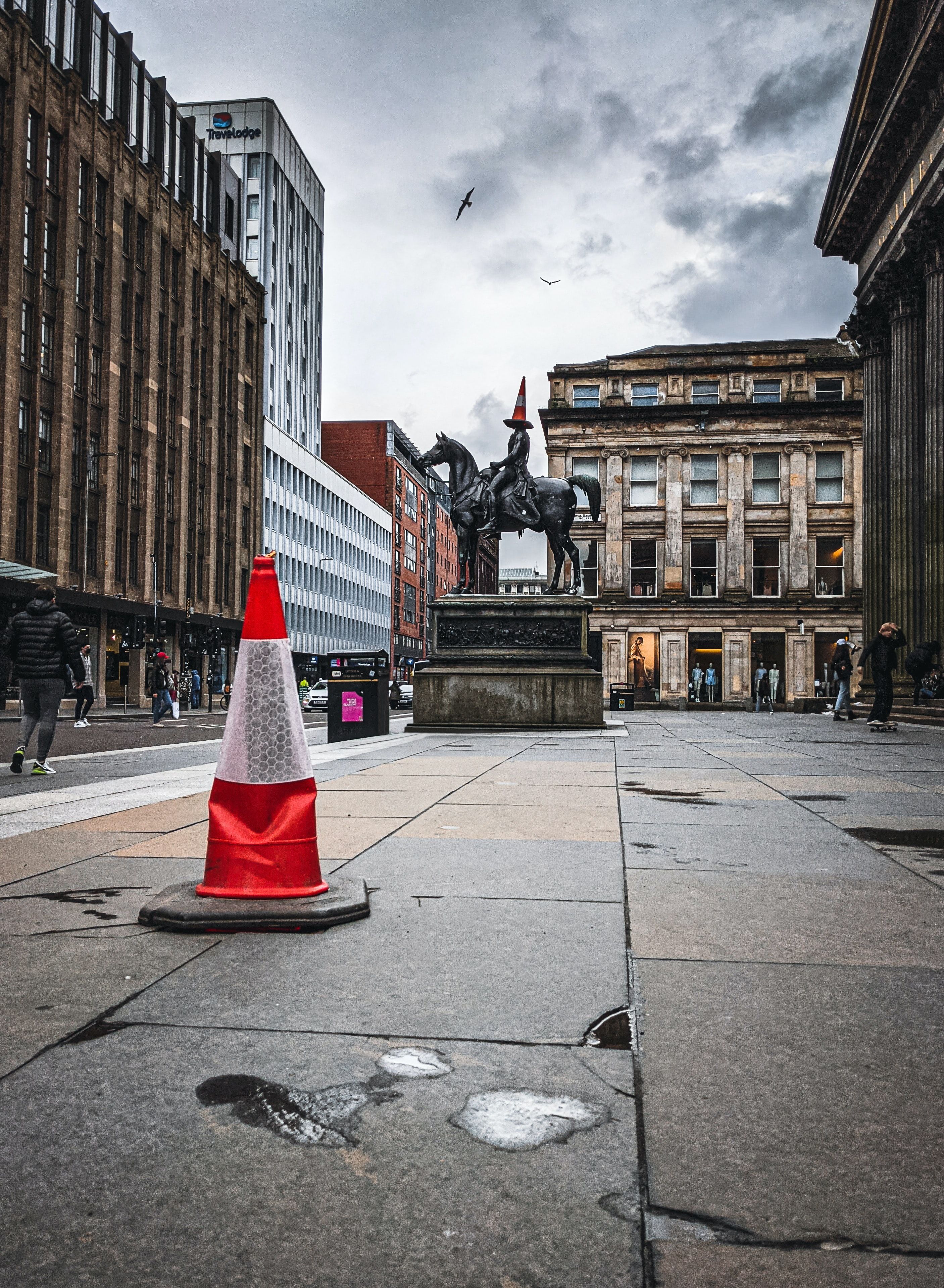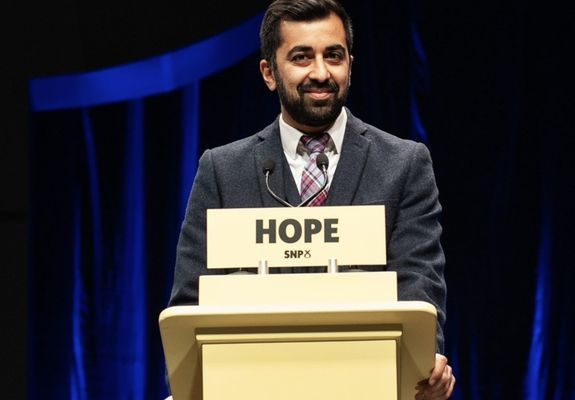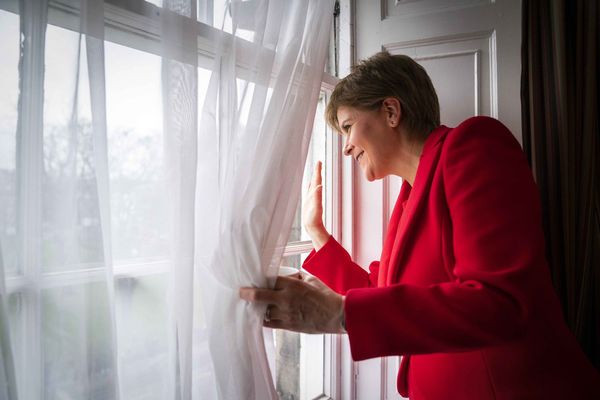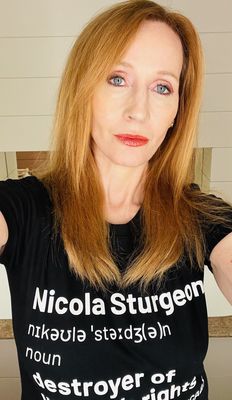THE worst thing about Scottish politics is the jokes.
It is not that partisan jibes on our side of the Sea of Moyle are all terrible. It is just that when we find a good one we tend to wear it out like the threadbare tartan carpets in our Highland hotels.
There was one gag that reigned for years. Scotland, it went, had more pandas than Tory MPs. It was funny, as the saying goes, because it was true.
For the best part of two decades the Conservatives were wiped out in Westminster votes in Scotland. They got no seats in 1997 and just one in four general elections after that. So, yes, they really were outnumbered by Edinburgh Zoo’s famously unfrisky Chinese bears.
Even Scottish Tories got in on the laugh. Way back in 2015 The party’s then leader Ruth Davidson went on the BBC satire programme Have I Got News for You and joked: “Nobody's taking our pandas. They're not very fertile but we still love them.”
Oh, my, did Ms Davidson guffaw on that show.
Looking back, this was the beginning of a Tory resurgence in Scotland. The party had always had a following. As the plain old Scottish Unionists, it had even swept the popular vote in the post-war years. But the legacy of Margaret Thatcher made its often dour representatives almost unelectable until the PR system in the Scottish Parliament. Now, starting in 2011, it had a good-humoured, TV-savvy smiley leaders who – newspapers kept reminding us – was a kick-boxing lesbian.
A year after HIGNFY Ms Davidson’s Tories leapfrogged Labour to become the second party of Holyrood. In May of 2017 they did the same at council elections. And a month later, they got 13 MPs elected at Westminster. The Panda gags, alas, survived. This time mobilised to mock Labour’s only MP.
The Conservatives, or so the orthodox political commentary said, had successfully re-pitched themselves as the party of the union. Some pundits even started talking about the “Ulsterisation” of Scotland, when all politics was defined by the constitutional question. So it was nationalists versus unionists, nats v yoons, and this squeezed out other parties. Until now.
Undoubtedly a disappointing set of results for @ScotTories (and I'm personally gutted to see some great councillors and candidates like @Mr_Mark_Brown miss out). But a bit of context required - this is against a 40 odd year high watermark in 2017. 1/
— Ruth Davidson (@RuthDavidsonPC) May 6, 2022
Last week, as Northern Ireland held its far more important Stormont elections, voters in Scotland elected new councillors. There are more pandas in Edinburgh zoo than pundits who thought these local polls were about local issues. This was, experts said, mostly, a giant opinion poll on national politics. Its finding? That the Tories were as much the party of Boris Johnson as of the Union. And that proved fatal: the PM, after all, is incredibly unpopular in Scotland. The Conservatives last week lost 63 councillors and slipped behind Labour in to third place.
Who won? Well, the SNP, of course. They secured their 11th successive electoral victory in the last 15 years. They marginally improved on their last outing at the council polls, where they traditionally do worse than in national votes. The SNP seems Teflon-coated. The party at Holyrood has had a torrid time recently: there remain questions about how it came to botch crucial ferry orders, wasting tens of millions of pounds. But it has paid little electoral price for claims of incompetence – though at last week’s election it lost the island of Arran, often portrayed as Scotland in miniature. Islanders have been plagued by unreliable links to the mainland.
Some important number crunching from @JimMonaghan10. The Scottish Labour vote has stabilised at just over 20%. Sarwar is primarily a beneficiary of much reduced expectations rather than a leader presently overseeing a significant recovery. pic.twitter.com/gMduf4qvJD
— Ewan Gibbs (@ewangibbs) May 8, 2022
Nationalists get annoyed about media coverage of elections – with so much interest focused on the runners-up.
But we are very much in what we journalists call a “dog bites man” situation. Nationalist victories are boring and routine. If the SNP loses, it will be “man bites dog” and we will have something new to report.
For now, it is the fight for supremacy among unionist parties that is grabbing attention. Labour was upbeat this weekend. Its leader Anas Sarwar said the party was “back”. SNP-minded observers, maybe a little cattily, pointed out the party had in fact recorded its second worst local election result in modern history. Yet Labour does have some big choices to make. It has nearly 22% of all council seats but a majority in just one area, West Dunbartonshire. What should it do with the rest? Form ‘progressive’ alliances with the SNP, Greens or Lib Dems? Or unionist ones with Tories and Lib Dems? Right now Mr Sarwar continues to insist he will not enter into formal coalitions. That vexes some of his local party operations.
Two front pages which ignore a key fact from the council elections in Scotland - more people voted for pro-UK parties than for pro-indy parties. But I guess it sells papers to nationalists. pic.twitter.com/XWY52Eq2jm
— Jamie Halcro Johnston MSP (@jhalcrojohnston) May 7, 2022
I shall make a point both Labour and the SNP hate to hear: they are not that different. The two social democratic parties might be bitterly divided on the future of the UK. And there are important and subtle differences on their stances on what used to be called municipal socialism. But the idea they cannot find common ground to manage schools and bin collections is for the birds.
Together with the Greens and Lib Dems, Labour and the SNP could lock Conservatives out of power north of the border. Will they do so? The STV PR system in use for local council elections – the same system as in Northern Ireland – means it is very hard to rule without compromise and co-operation. It also, of course, means that councils can become ungovernable if parties refuse to play nice.
Asked Anas Sarwar about talking to the Greens and he said: "Let's not try and pretend the Greens are neutrals in this election, the Greens are not neutrals in this election, the Greens are a branch office of the SNP."
— Andrew Learmonth (@andrewlearmonth) May 6, 2022
What do Tories do now? Well, they are not completely out of the running. They still have their Holyrood contingent. The Scottish party sounds angry about what is happening in London but never quite finds the nerve to split from its English counterparts. Its leader, Douglas Ross, initially called for Boris Johnson to resign over PartyGate. He later changed his mind, saying it was wrong to dump a premier during the Ukraine crisis. Mr Ross faces talks of a leadership plot but insists he will stay in post.
Much of the party’s literature pushed through doors during the local election campaign featured Ruth Davidson, who is now out of front-line politics and in the House of Lords. There she is Baroness Davidson of – seriously – Lundin Links, a Fife village whose name is a bit of a double entendre. See, I told you Scottish politics had cheesy gags.
🎉 Morning after @theSNP’s best ever council election result, @NicolaSturgeon joins the wonderfully large new Dundee SNP group. pic.twitter.com/mpXGt4X0P4
— Sarah Masson (@_sarahmasson) May 7, 2022








